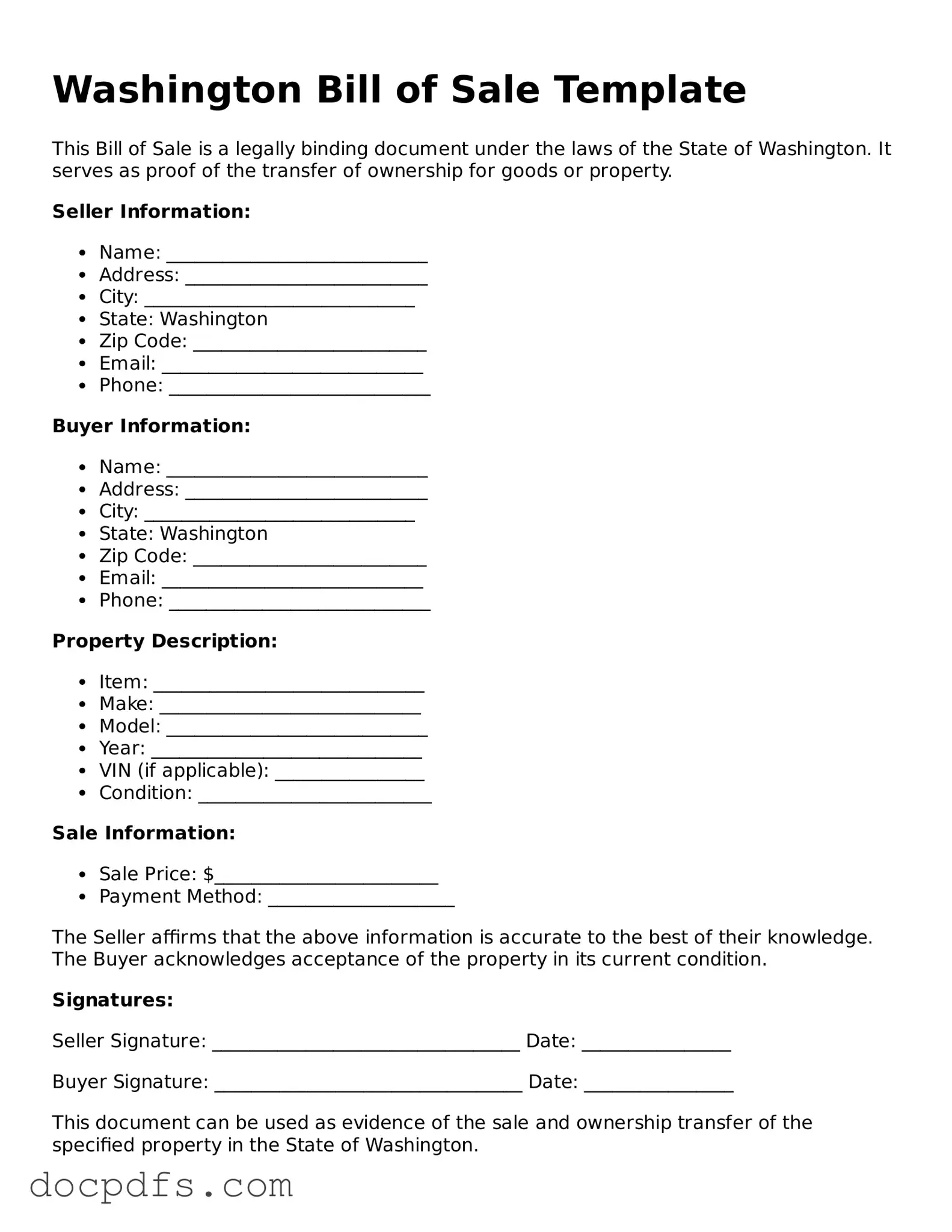Free Washington Bill of Sale Form
A Washington Bill of Sale is a legal document used to transfer ownership of personal property from one person to another in the state of Washington. This form serves as proof of the transaction and outlines essential details about the item being sold, such as its description and sale price. Understanding how to properly complete this document can help ensure a smooth and legally binding transfer of ownership.
Open Bill of Sale Editor Now
